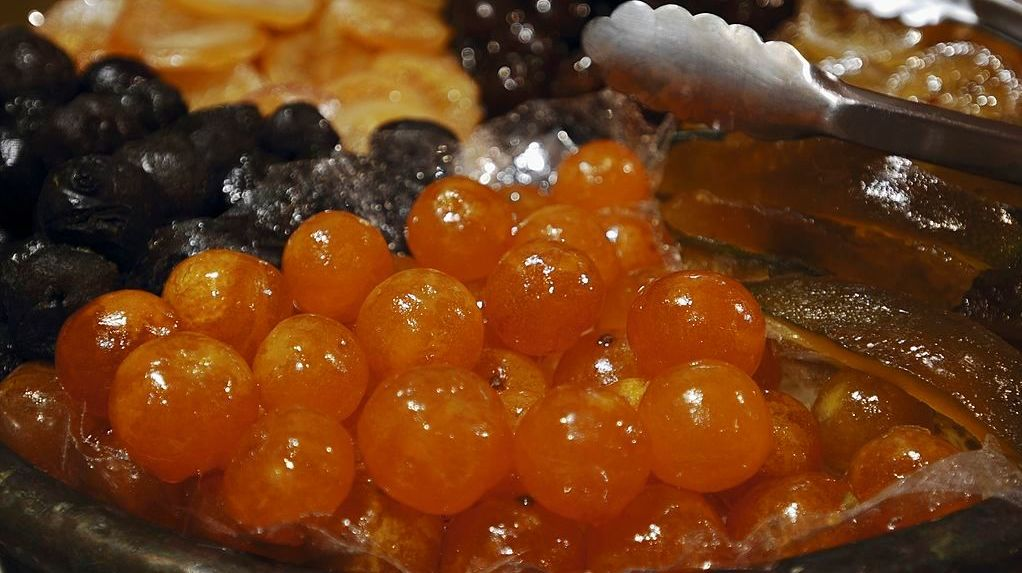TIL What The Heck Sugarplums Actually Are
About a week and a half ago, Dunkin' announced the debut of its Sugarplum Macchiato. Normally I wouldn't really think too deeply about something like that. Christmas is on the way, and you'll hear wisps of tunes like Dance of the Sugar Plum Fairy from The Nutcracker while you're off baking cookies in the kitchen.
The macchiato, according to the press release, "features the bright berry flavors of blueberry, raspberry, blackberry, and plum, accented by notes of vanilla, and rounded out with a sweet sugary finish." Plum is barely mentioned at the end, like an afterthought. Then a big thought dawned upon me, something I never questioned in my 39 years on this planet: What the fuck is a sugarplum?
In my mind, they were just dried plums (prunes, I guess), coated in some form of granulated or powdered sugar. Sugarplums. Sugar-coated plums. That seems pretty straightforward, some typical old-fashioned flavor shit that I never thought twice about. Was there something I was missing? What else could they be?
I searched for a few things, but the answer wasn't immediately clear. Google happily sent me to a vape juice shop's website to browse its sugarplum flavor varieties. I nosed around some more, Google sent me back to varying forms of Dunkin's announcement, then, finally, I found this over at National Geographic. I feel betrayed.
Candy historians and the Oxford English Dictionary have a much different definition. A sugarplum is a form of candy called a comfit (not to be confused with confit; why is this getting worse?). A comfit is like a seed, nut, or bit of spice coated with a layer of hard sugar. Hundreds of years ago, in the Middle East and later in Europe, popular versions of comfits contained fennel, coriander, cardamom, aniseed, or caraway. You could also have almonds, walnuts, cinnamon, even ginger comfits.
They were also a pain in the ass to make. The sugar layer was tricky to add, and involved building up layers of sugar starting from a syrup using a special funnel called a "pearling funnel" or "cot," and then the candies had to be shaken around a hot pan. This process had to be repeated for up to multiple days in order to get up to 30 sugary layers on top of the seed or spice core. Because this process was such a slog, comfits used to be pretty lumpy, but with modern techniques like spinning drums and such, we can now get candies with perfect shells on them, like, say, M&M's or Gobstoppers.
Naturally, since comfits were so labor-intensive, they cost a lot of money. During Tudor times, caraway was the most popular flavor. Only rich people got to eat these candied caraway seeds to do things like settle their stomachs with a nice glass of spiced wine after a meal. This combination was supposed to alleviate indigestion and excessive farting.
No plums. You've got to be fucking kidding me. There's not even a single plum within a mile of a sugarplum. If I sound riled up, it's because I am. I had no idea. Here I am picturing children in Christmas poems dreaming about quaint candied fruit, when they're really thinking about the tooth-cracking precursors to Jordan almonds and medicinal-sounding fart suppression delicacies meant for wealthy people. What, the next thing you're going to tell me is that Santa's not real, right? Because that would a good capper to this.
